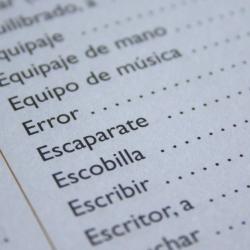The Role of Grammar in Language Learning: Why It Matters
In the realm of language learning, grammar often stands out as a cornerstone component that can elicit both dread and respect among learners. While some might view it as a cumbersome set of rules, others recognize it as an essential framework that shapes effective communication. Understanding the role of grammar in language learning is crucial to appreciating its importance and leveraging it to enhance linguistic proficiency.
The Foundation of Communication
At its core, grammar is the structural foundation of language. It provides a set of guidelines that dictate how words are arranged to convey meaning. Without grammar, language would be a chaotic collection of words, lacking coherence and clarity. For language learners, mastering grammar is akin to acquiring the tools needed to construct meaningful sentences, express nuanced thoughts, and engage in complex conversations.
Enhancing Comprehension and Expression
Grammar is not only about forming correct sentences but also about understanding them. A solid grasp of grammatical structures allows learners to decipher meaning, recognize subtleties, and infer context. This comprehension extends beyond individual sentences, enabling learners to fully engage with texts, dialogues, and media in the target language.
Moreover, grammar empowers learners to express themselves accurately and precisely. It provides the means to differentiate between tenses, moods, and voices, allowing for a rich tapestry of expression. Whether one wants to recount a past event, speculate about the future, or articulate a hypothetical scenario, grammar is the tool that facilitates these diverse forms of communication.
Facilitating Language Acquisition
Grammar plays a pivotal role in the cognitive process of language acquisition. It helps learners identify patterns and regularities within the language, aiding in the internalization of linguistic structures. Understanding grammatical rules allows learners to generate new sentences creatively and apply the language in various contexts.
Additionally, grammar instruction aids in error correction and reinforces learning. By recognizing and correcting grammatical mistakes, learners can refine their language skills and gain confidence in their abilities. This iterative process of learning, practicing, and feedback is essential for achieving fluency and proficiency.
Cultural and Contextual Understanding
Grammar is deeply intertwined with the cultural and contextual aspects of language. It reflects the values, norms, and historical development of a language community. For instance, the use of formal and informal registers, honorifics, and politeness strategies are all governed by grammatical rules that vary across cultures. By studying grammar, learners gain insights into the cultural nuances and social norms of the target language, enhancing their cultural competency.
Challenges and Strategies
Despite its importance, grammar can pose challenges for learners. The complexity of rules, exceptions, and linguistic diversity can lead to frustration and confusion. However, adopting effective strategies can mitigate these challenges. Integrating grammar instruction with practical, communicative activities helps learners see the relevance and application of grammatical concepts. Interactive exercises, storytelling, and real-life simulations can make grammar learning engaging and meaningful.
Technology also offers innovative solutions, such as language learning apps and online resources, which provide interactive grammar exercises and instant feedback. These tools make grammar learning accessible and adaptable to individual learning styles.
Conclusion
Grammar is an indispensable element of language learning that serves as the backbone of effective communication. Its role in enhancing comprehension, expression, and cultural understanding cannot be overstated. While it may present challenges, embracing grammar as a vital component of language learning opens the door to linguistic mastery and cultural insight. As learners navigate the intricacies of grammar, they build a strong foundation that supports their journey toward fluency and meaningful engagement with the world of language.





















